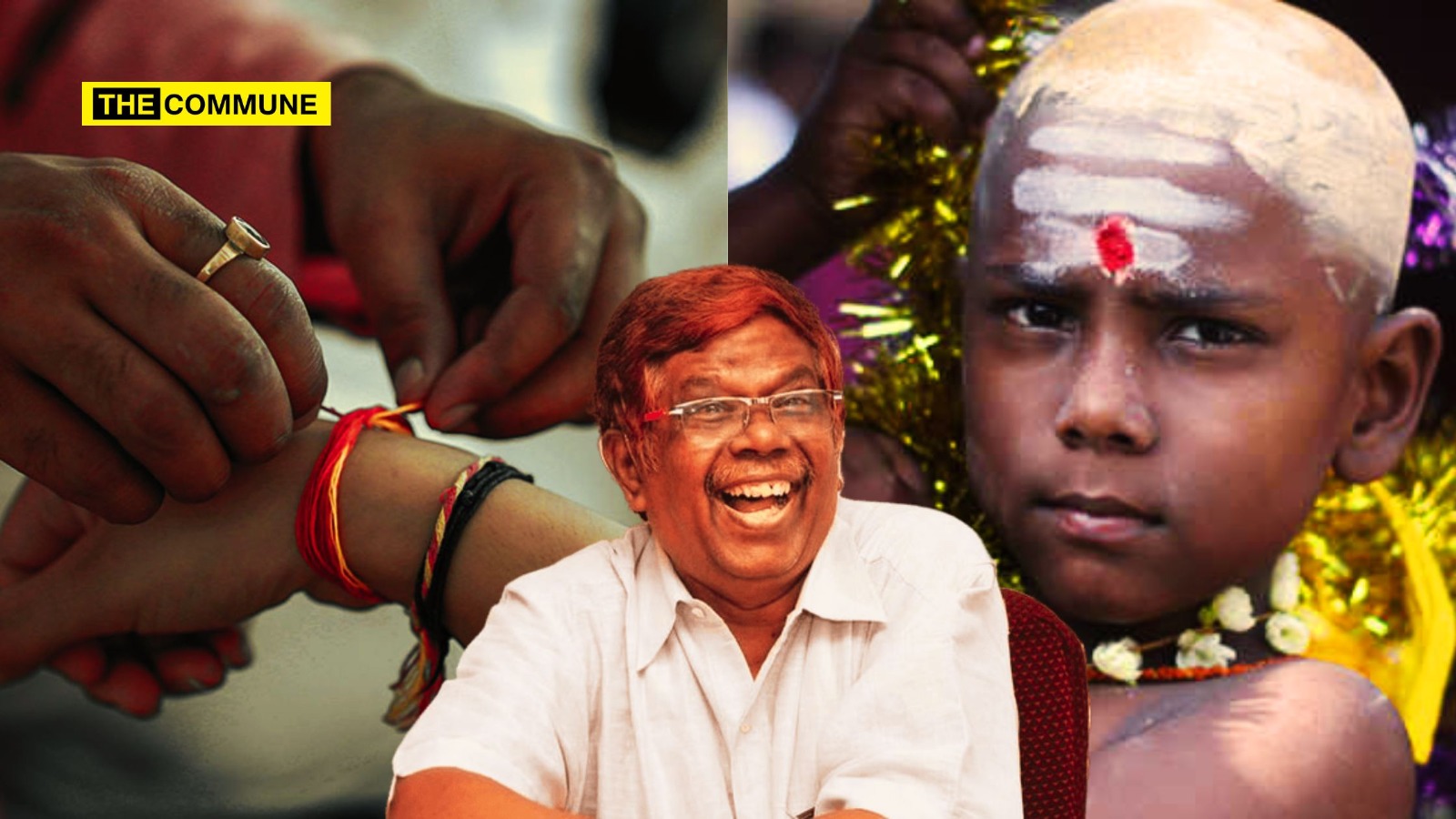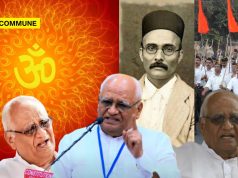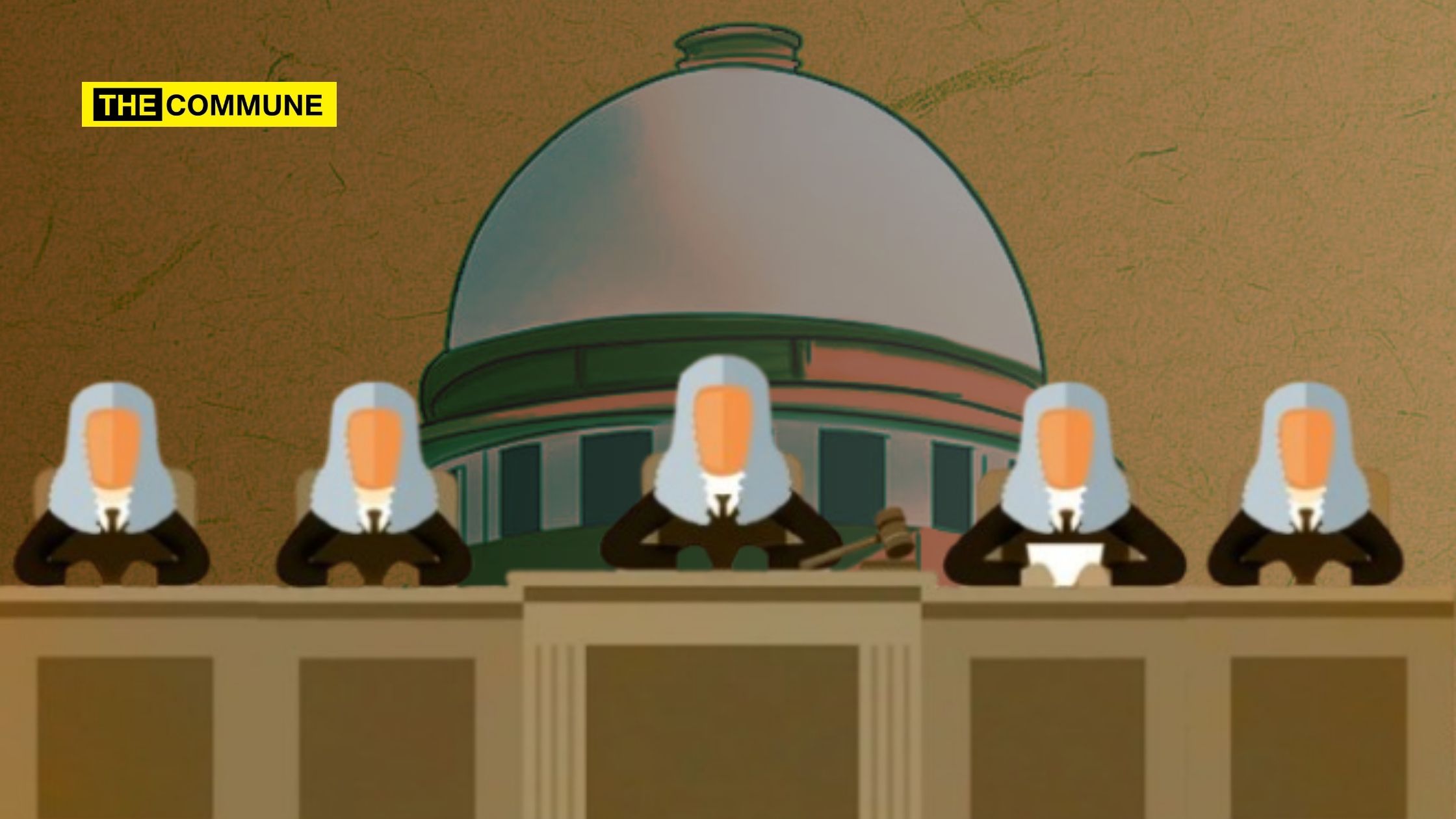
Justice (retired) K. Chandru recently presented an interesting report he authored to the Chief Minister of Tamil Nadu, Thiru. M.K. Stalin. It is titled, “Report of the one man committee to avoid violence based on caste and community feelings among college and school students, create harmony and to suggest guidelines.”
The terms of reference, meticulously crafted to focus on ‘caste’ and ‘creed’, cleverly conclude, “The Committee must investigate such other factors which it may consider necessary or as per the suggestions made by the government.” In simpler terms, it is yet another horse before the cart committee – which (in all probability) started its work after writing the recommendations.
I must confess I haven’t gone through the 600+ pages of the full report. As we say, ஒரு பானை சோற்றுக்கு ஒரு சோறு பதம் I went through 18 pages—the terms of reference and the committee’s recommendations.
Chapter 15 of this report is the recommendations. This chapter has two sections: (1) Cannot Wait Anymore – these are the twenty recommendations the committee wants the government to implement in the short term and (2) Long-term goals – Here, the committee has three lofty pipedreams.
While section 1 is the most problematic for most of us, I would prefer to start with section 2 to illustrate how non-serious the government is when tackling caste issues.
15 (2) (2): Enhance local bodies’ control over primary education – While this prima facie looks lofty, the simple question you must ask yourself is – Who controls local bodies? The answer is simple: the dominant caste controls the local bodies. Haven’t we heard about Naickaneri village panchayat? The issue was brought to light by the Honorable Governor of Tamil Nadu, His Excellency Sri. R.N. Ravi. It is another story the TN government came up with a halfhearted explanation for this serious story, asking the Governor of Tamil Nadu to look at the North Indian states.
To make the long story short, if the government was any serious about solving the caste issue, they should start looking at it from the politicisation and weaponisation of castes by creating vote banks. But then, if we go to section 1 of Chapter 15, we know exactly what the government’s objective is. The objective of the government and this committee is clear with the very clever half-use of a quote from Babasaheb Dr. B.R. Ambedkar.
“Hindus must consider whether the time has not come for them to recognise that there is nothing fixed, nothing eternal, nothing sanatan; that everything is changing, that change is the law of life for individuals as well as for society. In a changing society, there must be a constant revolution of old values; and the Hindus must realize that if there must be standards to measure the acts of men, there must also be a readiness to revise those standards.”
I would have been happy if the government of Tamil Nadu had read this quote from Babasaheb in his book Thoughts on Pakistan, while they obfuscated the Coimbatore bomb blast, calling it a cylinder blast.
“Appeasement means to offer to buy off the aggressor by conceiving at or collaborating with him in the rape, murder, and arson on innocent Hindus who happen for the moment to be the victims of his displeasure. On the other hand, settlement means slaying down the bounds which neither party to it can transgress. Appeasement sets no limits to the demands and aspirations of the aggressor. Settlement does. The second thing the Congress has failed to realize is that the policy of concession has increased their aggressiveness and what is worse the Muslims interpret these concessions as a sign of defeatism on the part of the Hindus and the absence of will to resist. This policy of appeasement will involve the Hindus in the same fearful situation in which the Allies found themselves as a result of the policy of appeasement which they adopted towards Hitler.”1
Or, this quote (from the same book) while banning Ganesh Chaturthi processions giving trivial reasons,
“Music before mosque is played in all Muslim countries without any objection. Even in Afghanistan, which is not a secularized country, no objection is taken to music before Mosque. But in India, the Musalmans must insist upon its stoppage because the Hindus claim a right to it.” 2
Of course, the façade of reverence for Babasaheb comes when you want to twist his thoughts to suit you.
15 (1) (1): Dropping Caste Appellations – This looks like a great suggestion on the face. After all, it would be good to remove all the caste suffixes that the names of schools and educational institutions have. Right? But not quite. Didn’t the earlier governments try this? They tried removing castes from the names of streets and bridges, renamed the entire transport corporation divisions, etc. But what results did it bring? Zilch. So, this is yet another cosmetic, we did it for the sake of doing something move that will not bring about anything.
15 (1) (2): Curriculum change – Funnily enough, the land of EVR and Dravida Model has just realized that they need to ‘change’ the curriculum to include “topics based on social justice, equality, and non-discrimination based on caste, in a time-bound manner.” But wait, didn’t we have all this before? I remember reading (among other social justice-themed things) Ravana Kaviyam by Pulavar Kuzhandai as part of Tamil poetry in school.
15 (1) (8): Students – Now we come to the obviously problematic portion of the report. Where the focus is on nothing else but Hinduism.
Avvaiyar said நீரில்லா நெற்றி பாழ். But who cares? This is the Dravida Model that wants to eradicate Sanatana Dharma, which is like Dengue and Malaria. So, the committee says, “Students should be prohibited from wearing any coloured wristbands, rings, or forehead marks (Tilaka).”
The interesting thing here is the “Terms of reference” and the careful usage of “caste” and “creed” to exclude skull caps, burkhas, and the cassock worn by Christian priests. Why don’t we invoke the secular nature of India and ban all these? But no, they vote en masse. Therefore, we cannot upset them at any cost. The Hindus, after all, doff their backsides and walk shamelessly behind those who want to eradicate Sanatana Dharma.
By the way, Avvaiyar talks about all the foreheads, right? She doesn’t say, ஐயர், முதலியார், பறையர், அருந்ததியர் நெற்றி. So why would you ban the forehead mark, which is common for all Hindus?
15 (1) (8) (d) is very interesting. This will not solve any problem but weaponise the school student community even faster. Here is the recommendation: you make your own judgement.
“The State government and School Education Department should permit all schools and colleges in Tamil Nadu to have student associations in every institution, with leadership elected annually by allowing all students to vote in those elections.”
15 (1) (10): Conducting Ara Neri Classes (அறநெறி வகுப்புகள்) – This is great. I am sure they will base their classes on Tirukkural. For the powers be, this is what Parimelazhagar3 (பரிமேலழகர்) says in the foreword (உரைப்பாயிரம்) to his commentary of Tirukkural about what Aram (அறம்) is.
He says, “அறமாவது, மனு முதலிய நூல்களில் விதித்தன செய்தலும் விலக்கின ஒழிதலும் ஆம்.”
Righteousness is doing what you are asked to do by books like Manu and not doing what they want you to avoid.
We know they only twist Thirukkural and Thiruvalluvar the way they like. And let us be sure that they will only talk about a special brand of Aram that suits the Dravidian narrative.
15 (1) (16): Social Justice Students Force (SJSF) (சமூக நீதி மாணவர் படை) – This one is comical to say the least. They want to create a quasi-army akin to NCC with drills, exercises, and all the bells and whistles to espouse the values of social justice. This after 15 (1) (15) talks about NSS. So, my simple question is, why should we raise a new force? Why can’t you ask NCC and NSS to adapt and spread the message of unity and harmony? At least for me, this doesn’t make any sense.
15 (1) (18): Restriction on the Use of School Properties for Non-Educational Purposes—We can clearly see that the Dravidian Model is rattled by the growth of Nationalistic fervour in Tamil Nadu. This clause, which covers both government and private educational institutions, looks to stop nationalistic organisations like RSS, Hindu Munnani, etc., from getting any space for their Shakas or meetings. As they say, “சீப்பை ஒளித்துவைத்தால் கல்யாணம் நின்றுபோகுமோ?” No matter how dictatorial and one-sided the current establishment is, it is just time before Tamil Nadu wakes up and responds to its anti-Hindu ways.
To close, I personally believe that the problem is not in the schools. It is not the wristband, ring, or forehead mark. Mind you, no one talks about Vengaivayal. However, one chapter of this report is dedicated to the “Nanguneri Incident.” This chapter is titled – “Nanguneri Incident” – An Eye Opener. In the Nanguneri incident, one boy takes an issue out of school and hacks his schoolmate and his sister at home (the stress is mine).
The needle this committee searched for is in the society, fired and run by the much-touted Dravidian model.
The social justice (சமூக நீதி) the Dravidian Model is supposed to have brought about stinks, and it will until Vengaivayals, Nanguneris, KV Nallurs, and Thiruvandars stop.
Here is what the Thiruvalluva Nayanar says for the current dispensation
கெடுவல்யான் என்பது அறிகதன் நெஞ்சம்
நடுவொரீஇ அல்ல செயின்.
Ketuvalyaan Enpadhu Arikadhan Nenjam
Natuvoreei Alla Seyin
– Tirukkural, Chapter 12, Kural 116
When thy heart swerveth from the right and turneth unto evil, know what thy destruction is near at hand.
– The Kural or The Maxims of Thiruvalluvar by VVS Iyer.
Notes and References
1, 2 B.R. Ambedkar, Thoughts on Pakistan, Source: Online
3 The Dravidian ecosystem avoids Parimelazhagar (13th century) because he is a Brahmin.
https://www.verdictum.in/pdf_upload/chandru-commission-1632032.pdf
Raja Baradwaj is a marketing communications professional who is currently working with a leading technology multi-national company. He is an avid reader, a history buff, cricket player, writer, Sanskrit & Dharma Sastra student.
Subscribe to our channels on Telegram, WhatsApp, and Instagram and get the best stories of the day delivered to you personally.




